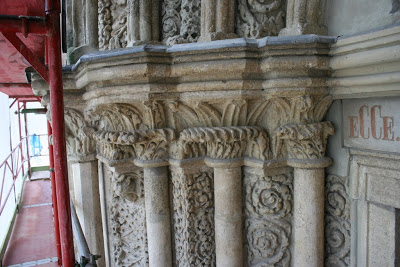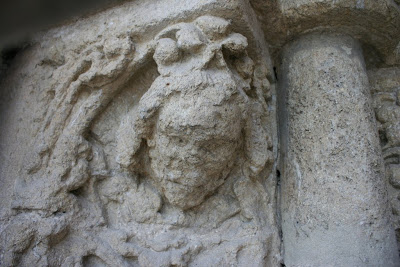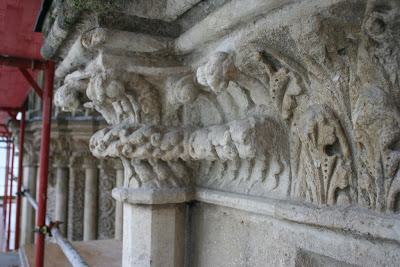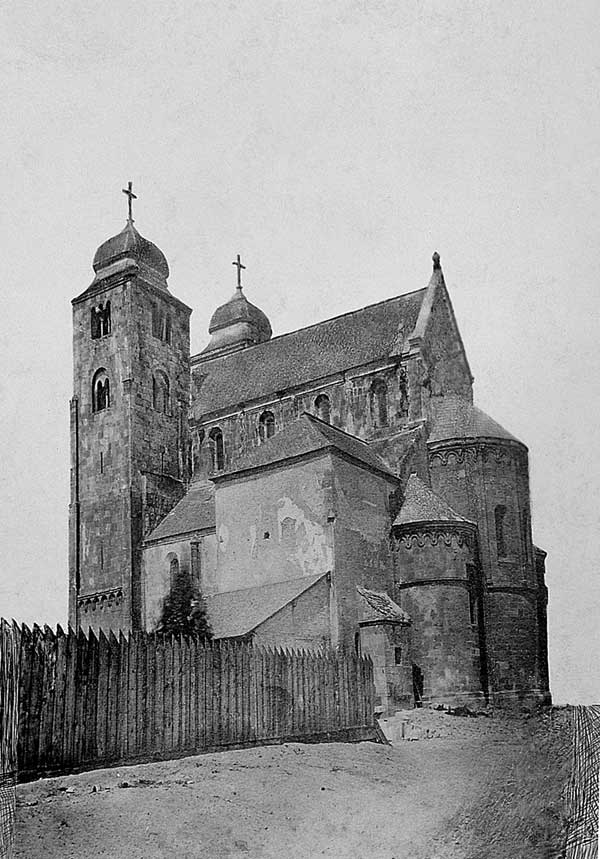Medieval History



- The Lost Medieval Church Of Bonyhád
It is rare that the excavation of a simple medieval parish church makes national news in Hungary. However, this is precisely what is happening these days with the remains of the medieval church of Bonyhád in southern Transdanubia: largely because...
- Exhibition About The Matthias Church
A major new exhibition about the building and the history of the Church of Our Lady (Matthias Church) of Buda Castle opened at the Budapest History Museum. The Church is a major historic monument of Budapest, part of the Unesco World Heritage site of...
- Main Altar Of Kisszeben On View Again
Photo: Hungarian National Gallery / MTI Photo: Soós LajosThe main altar of the church of Kisszeben (Sabinov, Slovakia) is on view again at the Hungarian National Gallery in Budapest. The altarpiece has not been put together since WWII - during the...
- Medieval Stone Carvings Stolen From The Hungarian National Gallery
As it was revealead on Tuesday, two highly important Romanesque stone carvings had been stolen from the Hungarian National Gallery some time in early February. Both carvings were on view in the medieval lapidary of the Gallery, located on the ground floor...
- Romanesque Stone Carvings From The Abbey Church Of Ercsi
The Benedictine monastery of Ercsi was located about 40 kilometers south of Buda (present?day Budapest), on an island of the Danube next to the much larger Csepel Island. The monastery was founded by Palatine Thomas (1185-1186), who was also buried there....
Medieval History
Exterior restoration of the Abbey Church of Lébény
| Scaffolding at Lébény |
On my way to Vienna today (where my main goal was to see the exhibition on the medieval plans of the Stephansdom), I stopped at the Romanesque Abbey church of Lébény. Some alarming news emerged about the condition of the building in recent years, as photos on this Hungarian website also attest (click for 'more pictures'). Well, by now, work is well under way on the exterior restoration of the building, and almost the entire edifice is covered by a scaffolding. Heavy rain and wind prevented me to explore the building more closely, and there is also very little information available online on the ongoing restoration. Main tasks include a consolidation of the facades and the renovation of the roof of the edifice. They are also restoring the old parish building, with the intention of creating a new museum there. Work will go on throughout the summer.
| Lébény, south portal |
The Benedictine Abbey of Lébény was officially founded in 1208, and it is believed that the church was completed within a short time. Benedictine life went on with varied intensity during the Middle Ages, until the church was burned by Turkish troops in 1529, as they were marching towards the siege of Vienna. The vault of the nave was not even repaired until the Jesuits took over the church in 1631. Those knowing the history of the region will not be surprised to read that the Turkish army burned the church again in 1683, en route to another failed siege of Vienna. The building was again fixed up by the Jesuits, and finally underwent major renovation during the 1870s.
 |
| The church of Lébény before 1872 |
Despite all these events, the church of Lébény can be regarded as one of the most intact Romanesque churches of Hungary. The fact that the church is still standing after 800 years is also due to those Italian stonemasons, who were sent there to dismantle the church at the time when the Ottoman Turks were advancing towards Gy?r. The stones of the monastery would have been needed to to repair the fortifications of Gy?r - but the masons did not carry out the job, saying the Lébény was the most beautiful church they have ever seen.
You can judge for yourself by looking at photographs at the following links:
Photos of the art history department of Pázmány Péter Catholic University
Hungarian summary of the church's history from the catalogue of the Pannonhalma exhibition on Benedictines in medieval Hungary (click on "Fotó" at the bottom of the page)
You can read on the current restoration here (in Hungarian)
Finally, here are some details of the stone carvings of the western portal seen from the lower levels of the scaffolding.
- The Lost Medieval Church Of Bonyhád
It is rare that the excavation of a simple medieval parish church makes national news in Hungary. However, this is precisely what is happening these days with the remains of the medieval church of Bonyhád in southern Transdanubia: largely because...
- Exhibition About The Matthias Church
A major new exhibition about the building and the history of the Church of Our Lady (Matthias Church) of Buda Castle opened at the Budapest History Museum. The Church is a major historic monument of Budapest, part of the Unesco World Heritage site of...
- Main Altar Of Kisszeben On View Again
Photo: Hungarian National Gallery / MTI Photo: Soós LajosThe main altar of the church of Kisszeben (Sabinov, Slovakia) is on view again at the Hungarian National Gallery in Budapest. The altarpiece has not been put together since WWII - during the...
- Medieval Stone Carvings Stolen From The Hungarian National Gallery
As it was revealead on Tuesday, two highly important Romanesque stone carvings had been stolen from the Hungarian National Gallery some time in early February. Both carvings were on view in the medieval lapidary of the Gallery, located on the ground floor...
- Romanesque Stone Carvings From The Abbey Church Of Ercsi
The Benedictine monastery of Ercsi was located about 40 kilometers south of Buda (present?day Budapest), on an island of the Danube next to the much larger Csepel Island. The monastery was founded by Palatine Thomas (1185-1186), who was also buried there....
